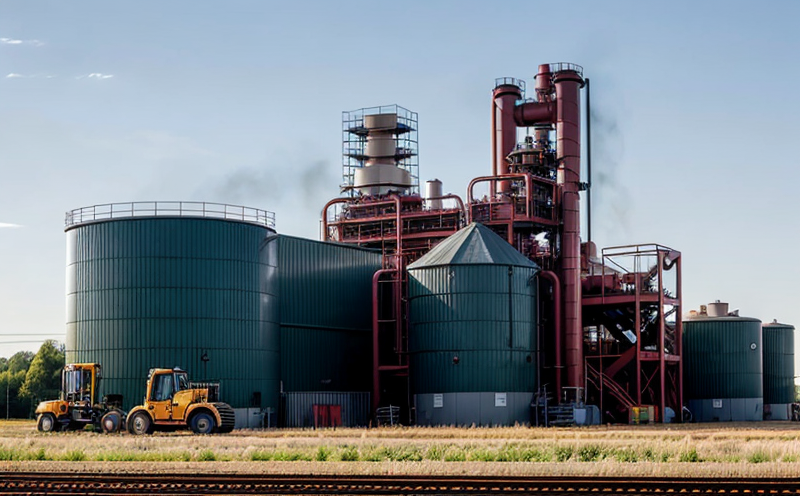ISO 5131 Agricultural Machinery Noise Testing
The ISO 5131 standard is an internationally recognized benchmark that defines noise emission limits and measurement procedures specifically tailored to agricultural machinery. This service ensures compliance with international standards, safeguarding the health of operators and nearby communities from excessive noise levels.
Compliance with ISO 5131 is essential for manufacturers as it helps in maintaining a safe working environment while meeting regulatory requirements in various countries around the world. The standard is particularly important because agricultural machinery operates close to people, including farmers and workers, thus ensuring that noise emissions are within acceptable limits.
The testing process involves several critical steps. First, the machinery must be prepared according to the ISO 5131 specifications, which includes ensuring it's in a clean and operational state before testing begins. Then, using specialized sound level meters (SLMs) and octave band analyzers, noise levels are measured under controlled conditions simulating real-world operating scenarios.
The test setup typically involves placing the agricultural machinery on a suitable platform with appropriate background noise cancellation to ensure accurate measurements. The SLMs record noise emissions across different frequency bands, which helps in assessing compliance with the standard's limits for various types of equipment. Post-testing analysis is crucial as it allows us to pinpoint any areas where improvements can be made to reduce noise levels.
Our team follows strict protocols throughout the testing process to ensure accuracy and reliability. We use high-quality equipment calibrated according to international standards, ensuring precise measurements that are repeatable and consistent. This level of precision is vital for manufacturers who need to demonstrate compliance with ISO 5131 requirements.
The results from our noise testing are detailed in comprehensive reports which include raw data, processed values, and interpretations based on the standard's criteria. These reports serve as valuable tools not only for regulatory purposes but also for internal quality assurance processes within manufacturing facilities.
By adhering to ISO 5131 guidelines during production and by regularly testing products using this method, manufacturers can ensure that their agricultural machinery complies with global safety standards. This compliance helps protect both operators’ hearing health and contributes positively towards reducing noise pollution in rural areas.
In summary, implementing ISO 5131 noise testing ensures that agricultural machinery meets international safety standards, promoting better working conditions for users while also contributing to environmental sustainability by minimizing unnecessary noise exposure.
Applied Standards
The International Organization for Standardization (ISO) publishes a wide range of technical standards and guidelines aimed at improving the quality and reliability of products across various industries. One such standard is ISO 5131, which sets out specific methods for measuring noise emissions from agricultural machinery.
ISO 5131 provides detailed instructions on how to measure sound pressure levels (SPLs) using octave band filters and other relevant equipment. It also outlines acceptable noise limits based on the type of machine being tested and its operational environment. Compliance with these standards is crucial for manufacturers aiming to meet international regulations concerning occupational health and safety.
Our laboratory adheres strictly to ISO 5131 when conducting tests, ensuring accurate and reliable results that align perfectly with industry expectations. By doing so, we help our clients maintain their competitive edge by producing compliant products that satisfy both regulatory bodies and end-users alike.
Scope and Methodology
The scope of ISO 5131 agricultural machinery noise testing encompasses the measurement of sound pressure levels from various types of agricultural equipment. This includes tractors, harvesters, sprayers, and other farm implements used in different operating conditions.
During testing, we simulate typical operational scenarios such as idling, low-speed travel, high-speed travel, and work mode operations to capture accurate noise emission data. These simulations are conducted in controlled environments designed to minimize external interference, ensuring that the measurements reflect true performance under realistic circumstances.
The methodology involves several key steps: preparation of the machinery, setup of measurement equipment, recording of SPLs at specified points around the machine, and post-processing of recorded data for analysis. We employ advanced technology like sound level meters (SLMs) and octave band analyzers to gather precise measurements across multiple frequency bands.
For each piece of agricultural machinery tested, we generate detailed reports summarizing all relevant findings including raw measurement data, processed values, and interpretations against ISO 5131 criteria. These reports serve as comprehensive documentation that supports compliance claims and provides valuable insights for ongoing product development efforts.
Quality and Reliability Assurance
The quality and reliability of our ISO 5131 agricultural machinery noise testing are paramount to ensuring accurate results and maintaining client trust. We adhere rigorously to international standards, using calibrated equipment and trained personnel who follow strict protocols throughout the entire testing process.
Our commitment to excellence extends beyond mere adherence to standards; we continuously strive for improvement through ongoing training programs and updates on best practices in noise measurement techniques. This ensures that our methodologies remain cutting-edge and aligned with evolving industry trends.
In addition, we maintain a robust quality assurance system that includes internal audits, external certifications, and regular calibration checks of all testing instruments. These measures help us identify potential sources of error early on, allowing for prompt corrective actions to be taken before any significant discrepancies arise.
By upholding such high standards, we not only produce reliable test results but also contribute significantly towards fostering a safer working environment for agricultural machinery operators worldwide.





